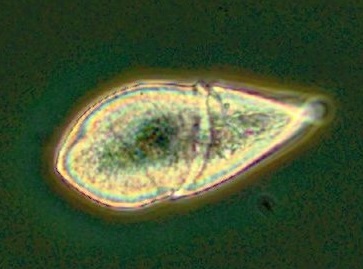Historical News
Fixed Site Network
Phillipsdale
This week at Phillipsdale, data revealed good water quality. Sondes were switched out for routine maintenance on March 6th. On the 7th there was a nor’easter that brought heavy winds and mixed precipitation to the area; there was approximately 1.25 inches of rain that fell over the course of the week. Surface salinity was very low this week, mostly under 5 psu with a weekly average of 2.3 psu, a maximum of 5.0 psu, and a minimum of 0.7 psu. Bottom salinity fluctuated with the tides and had an average of 10.5 psu and a range of 0.8 psu – 28.1 psu. Surface and bottom temperatures decreased this week by roughly 2-3oC as compared to last with surface temperatures averaging 4.7oC with a range of 3.3oC – 5.8oC; bottom temperatures had an average of 4.5oC and ranged between 3.3oC – 5.6oC. Surface chlorophyll was relatively low with a weekly average of 3.2 ug/L. Dissolved oxygen (DO) for the week was very good at the surface and the bottom; surface DO had an average of 12.8 mg/L and a range of 12.0 mg/L – 13.3 mg/L. Dissolved oxygen in the bottom waters had a weekly average of 11.7 mg/l and ranged from a minimum of 9.6 mg/L to a maximum of 13.2 mg/L. Note that tidal fluctuations and Blackstone River flow greatly influence bottom DO, temperature and salinity at this location.
Bullocks Reach
The sondes at Bullocks Reach were removed for the season in November 2017. It is anticipated that the station will be operational again for the season in June 2018.
Nutrients Sampling
Fixed Site Network
Phillipsdale
This week at Phillipsdale, data revealed good water quality. There was approximately 3.46 inches of rain that fell over the course of the week, which resulted in a very large increase in river flow from the Blackstone River and a subsequent effect on water quality at Phillipsdale. Surface salinity had a weekly average of 4.11 psu and increased over the course of the week until the 2nd, when it reached a maximum of 13.96 psu with an extreme high tide. Salinity then decreased as the tide went out and heavy river flow decreased salinity; a minimum salinity of 0.84 psu was observed on the 3rd. Bottom salinity had also decreased at the end of the week due to high river flow but was not as dramatically affected as the surface. Bottom salinity had an average of 14.13 psu and a range of 0.96 psu – 28.32 psu. Surface and bottom temperatures decreased this week as compared to last with surface temperatures averaging 6.6oC with a range of 4.8oC – 8.5oC; bottom temperatures had an average of 5.6oC and ranged between 4.1oC – 7.9oC. Surface chlorophyll was relatively low with a weekly average of 3.4 ug/L, though chlorophyll did begin to increase at the end of the week. Dissolved oxygen (DO) for the week was very good at the surface and the bottom; surface DO had an average of 11.8 mg/L and a range of 10.4 mg/L – 13.1mg/L. Dissolved oxygen in the bottom waters had a weekly average of 10.4 mg/l and ranged from a minimum of 8.6 mg/L to a maximum of 12.8 mg/L. Note that tidal fluctuations and Blackstone River flow greatly influence bottom DO, temperature and salinity at this location.
Bullocks Reach
The sondes at Bullocks Reach were removed for the season in November 2017. It is anticipated that the station will be operational again for the season in June 2018.
Bacteria Sampling
Twenty stations were sampled for fecal coliform bacteria in the Providence and Seekonk Rivers on March 7, 2018; five of these stations were additionally sampled for Enterococci bacteria. A total of 2.57 inches of rain fell during the five days prior to sampling; 1.0 inches of rain was recorded on sampling day of the 7th as well, but this precipitation was after sampled collection.
Overall, the fecal coliform geometric mean was 57 MPN/100 mL for both rivers, an increase from the previous sample date. The fecal coliform geomean was higher in the Seekonk River (95 MPN/100 mL) compared to the Providence River (45 MPN/100 mL). The maximum fecal coliform concentration of 430 MPN/100mL was measured in the Seekonk River at the Phillipsdale Landing location, though a duplicate taken at the site had a value of 43 MPN/100ml. In the Providence River, a maximum fecal coliform concentration of 250 MPN/100mL was measured at the South FP East location. Fecal coliform concentrations for both rivers were outside the state guidelines for primary contact and shellfishing.
Enterococci results were slightly elevated. The overall Enterococci geometric mean was 13 MPN/100 mL. Concentrations ranged from below detection to 31 MPN/100 mL. These results are within state criteria for primary contact.
Please note: the results of NBC's fecal coliform and Enterococci monitoring are for informational/research purposes only and are not intended to suggest official state compliance with bathing or shellfishing standards.
Phytoplankton Sampling
Phytoplankton samples were collected at Bullock’s Reach on February 28, 2018 and analyzed in the laboratory shortly after collection. It was a breezy and cold day on Narragansett Bay. Water temperature was 5.24°C and salinity was 20.38 psu.

200x phase contrast image of a dinoflagellate, Gyrodinium sp.


